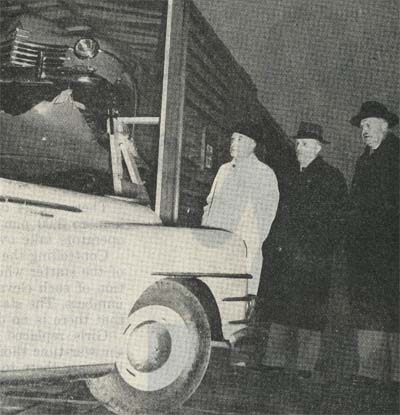
Canadian Pacific Staff Bulletin - June, 1947
Speed Up Train Operations

Transcontinental passenger trains and heavily-laden freights can now be handled with increased speed and safety over the line on which signalling has just been completed and on which 30 to 32 trains operate daily.
"Not only does this equipment rule out accidents as far as is humanly possible, but surveys made during peak traffic periods have shown that automatic signals increase by about 20 percent the number of trains which can be handled without delays on single track," Mr. Manson said.
Of the newly protected stretch the 98 miles from Carleton Place to Chalk River is on the main line from Montreal to Western Canada, and connection with the Montreal-Toronto line is made over the 17 mile stretch from Carleton Place to Smiths Falls.
The new signals are electrically operated from the rails and the wheels of passing trains, and a train can never follow closer than one automatic block from the train ahead. Distances between the blocks vary, depending on the grades and curves of the line.
Smiths Falls, the eastern terminus of the subdivision, is one of the most important yards in the Dominion and the funnel through which all freight from the West and from Toronto passes en route to Montreal. Now that the installation on the line leading to Western Canada has been completed, the three principal rail lines radiating from Smiths Falls have full automatic signal protection, the 129 miles from Montreal and the 209 miles from Toronto having been so equipped some time ago.
Travellers on passenger trains will notice the improvement, Mr. Manson said, "for automatic signals result in smoother train operation as with the ample warning given fewer starts and stops are necessary."
At Carleton Place, one of the subdivision's main junctions, the switches are thrown by electric controls from the operator's desk in the station, instead of being manually operated by train crews.

 and is reprinted here with their permission. All photographs,
logos, and trademarks are the property of the Canadian Pacific Railway Company.
and is reprinted here with their permission. All photographs,
logos, and trademarks are the property of the Canadian Pacific Railway Company.